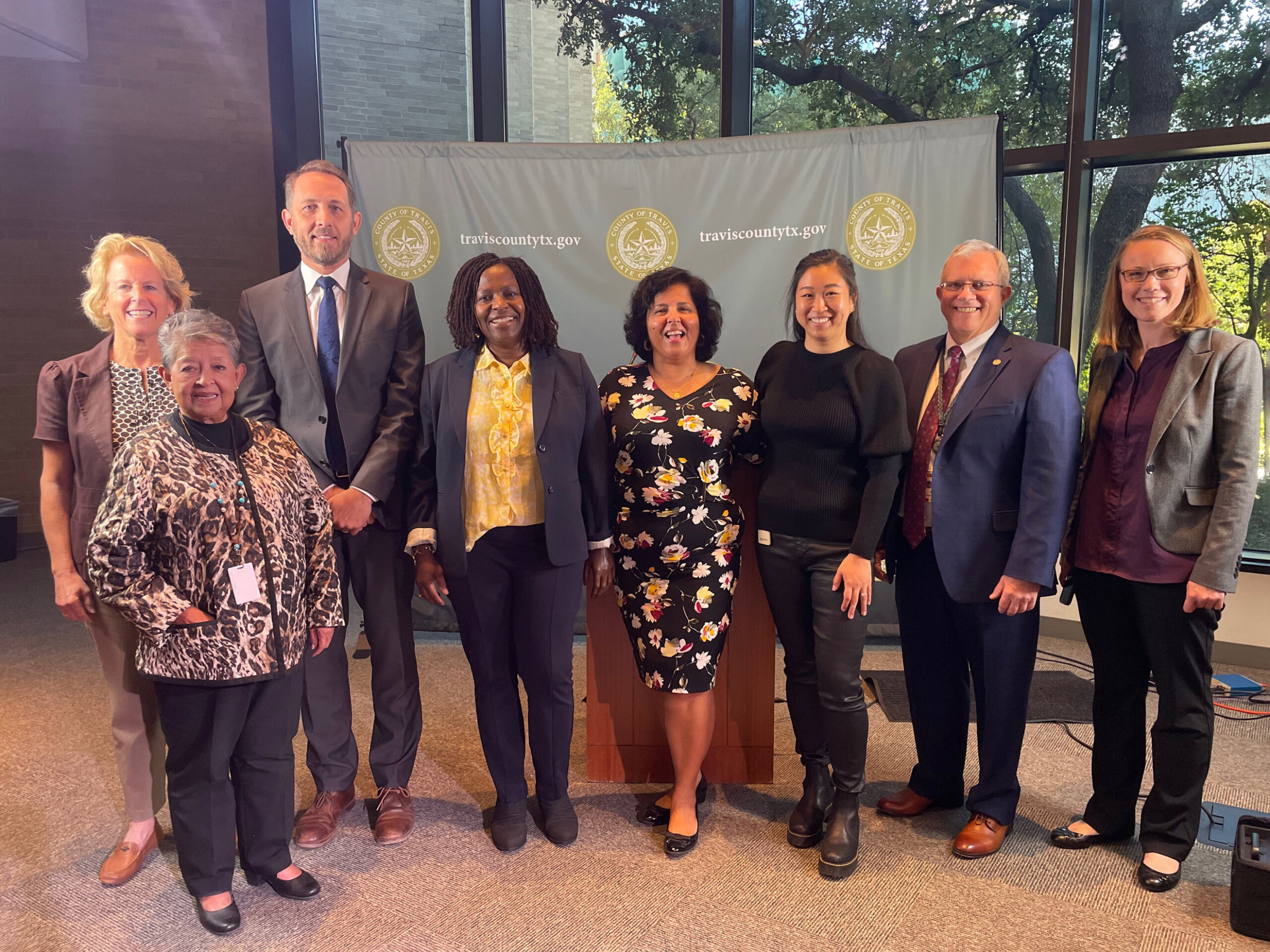
St. David’s Foundation has awarded a $150,000 grant to Travis County for its broadband and digital inclusion efforts. This investment will support the completion of an in-depth landscape analysis to gather data around broadband coverage, connectivity, speeds, and pricing to position Travis County to be competitive in leveraging state and federal funds. Funding will also support culturally congruent efforts to intentionally seek and include insights from historically disinvested communities and create a community coalition that will inform future resource allocation to adequately serve the County, particularly underserved and unserved areas.
Below are remarks delivered by Abena Asante, Senior Program Officer at St. David’s Foundation, at the Broadband & Digital Equity Press Conference on October 25, 2022
Good afternoon, everyone, I am Abena Asante from St. David’s Foundation. It’s wonderful to be here today for this exciting announcement between St. David’s Foundation and the Travis County Commissioners Court.

St. David’s Foundation has a vision for making our community a vibrant and inclusive place where every individual can flourish and reach their full potential. We recognize that access, affordability, and use of broadband and connectivity is a necessity, not a luxury.
To build that vibrant and inclusive community, broadband is needed. Digital connectivity is an essential infrastructure, no less important than the electricity that powers our homes. It’s been said that broadband is a third utility, next to electricity and water. Our community’s well-being, our leisure activities, education, health care, and economic development all rely on the physical availability of broadband. We also need affordability of service and the know-how for using broadband by the community.
While Austin has a national reputation for attracting technology companies and talent, there are far too many marginalized and historically excluded communities in our county that lack adequate access to broadband. They remain what we call “unserved” and “underserved,” meaning that they are digitally excluded.
We also know that the lack of Internet access affects nearly every part of life: how we engage with our neighbors, how we educate ourselves, how we learn, how we do business. It’s the vital currency that is needed to effectively participate in the global economy. So the urgency of this issue demands a joint response from public, private, and civic sectors, including philanthropy –not forgetting the community that this impacts.
With today’s investment, Travis County and its partners, including the City of Austin and so many others not here in the room with us today, will be taking steps to address the digital divide, beginning with an in-depth landscape analysis that Judge Brown mentioned.
Texas Rural Funders, a statewide collaborative of about forty rural funders here in Texas, was working on broadband way in advance of the pandemic. The work that Rural Funders did, which St. David’s Foundation was a part of, laid the groundwork that helped with the passage of House Bill 5 in 2021 to establish the first statewide broadband office and to create a broadband plan for Texas. That legislation represents a critical milestone here in Texas, but there’s much more work to be done to ensure full digital access and inclusion.
Funding alone is not the whole picture. There are many great efforts underway, but there is a need for more information and resources on digital inclusion. This includes developing an understanding of the types of digital inclusion work occurring in Texas, and this grant to Travis County is in alignment with these goals.
We aim to co-lead this regional effort with multiple sectors, including government, philanthropy, institutional leaders, all the while centering community as we need the trust and collaboration of all our neighbors to close the digital divide. Together, we can ensure that Central Texas is a national leader, not only in business, but also in workforce development, in telehealth, and economic growth through the digital inclusion of not some, but ALL our residents.